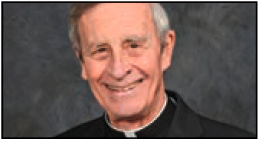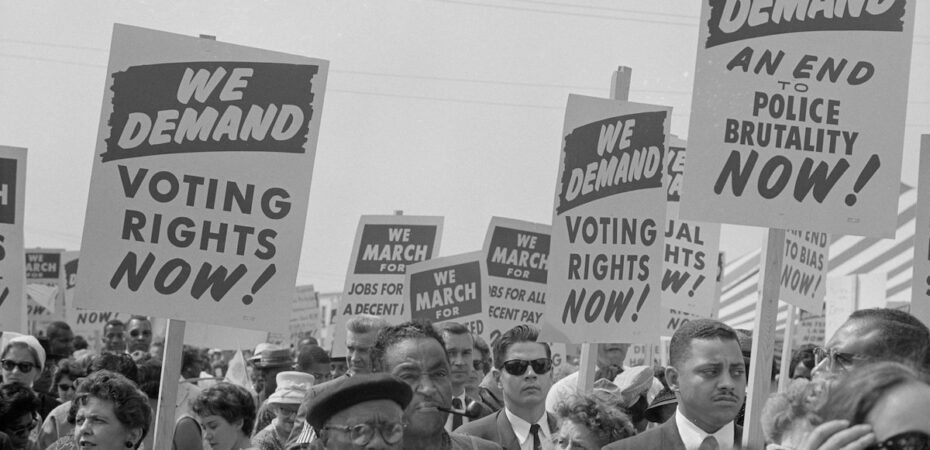The Civil Rights Movement and Vietnam Era
A vortex of change on every side
Father Robert J. Hater Comments Off on The Civil Rights Movement and Vietnam Era
 The winds of change blew strongly during these 10 years. What happened at the Second Vatican Council by the way of moving the Church away from relative isolation and its fortress mentality came as strong forces for change gathered worldwide. This era followed in the aftermath of the assassination of President John F. Kennedy (1963) and ended around the time of Roe v. Wade (1973). Those living in this period were caught in a vortex of change on every side.
The winds of change blew strongly during these 10 years. What happened at the Second Vatican Council by the way of moving the Church away from relative isolation and its fortress mentality came as strong forces for change gathered worldwide. This era followed in the aftermath of the assassination of President John F. Kennedy (1963) and ended around the time of Roe v. Wade (1973). Those living in this period were caught in a vortex of change on every side.
The prophetic vision of Pope John XXIII, opening the Church to dialogue entering the Church at this time coincided with what was occurring in almost every phase of life. The results were profound and the influence on humankind led to a revolution of thought and action, which grew into tremendous unrest. It can rightly be said to have created a generation of anger.
Two events that illustrate this climate of change and uncertainty symbolize what was occurring were the Civil Rights Movement and the Vietnam era. We address them as symbolic of the times and conclude with a brief description of what happened in the aftermath of Vatican II.
Civil Rights
My entry into academic life began in May 1967, as a professor at Mount St. Mary’s Seminary of the West in Cincinnati, after three years of doctoral work at St. John’s University in New York. The anger permeating U.S. society manifested itself on my graduation day.
After the graduation ceremony, I called my parents. They told me that racial riots had broke out in Cincinnati the night before. My brother, Tom, was caught in one of them while in training with a gasoline company. As he and his instructor drove down Reading Road, a brick came through the driver’s window, hit the driver in the head and knocked him unconscious. Tom was sitting next to him and was able to grab the steering wheel, control the truck and get it out of the area before the truck was struck again.
This riot, the first of its kind in that particular area, was indicative of what was happening countrywide. My first encounter with the riots and the tension our country experienced was different.
It happened at a meeting of religious leaders in Cincinnati, intended to lessen the unrest and end the riots. This coalition of Black and white men and women of different religious denominations assembled in a Baptist church.
Tension filled the church as the meeting began. In the front of the church, five civic officials sat. Halfway through the gathering, a man came up to the minister leading the assembly and whispered something to him. With that, the leader stood up and asked everyone to remain in absolute silence. Then, he announced that Martin Luther King Jr. had been shot and killed in Memphis, Tennessee.
An eerie silence filled the church as he asked for quiet. Then, he told everyone to leave the church in silence and go home. I’ll never forget this powerful moment, when the Civil Rights Movement was changed forever. The day was April 4, 1968.
When I recall Rosa Parks, the Civil Rights Act of 1964 and the leaders of this movement, I’ll never forget the evening in that Black Baptist church. What happened there symbolized the multiple tragedies and injustices perpetrated on our Black brothers and sisters.
Vietnam
When teaching at the University of Dayton, I met many Vietnamese boat people who survived the fall of Saigon on April 30, 1975. They had to leave everything behind, including many loved ones, as they wondered what the future held.
This terrible war brought the United States to its knees and still recalls the anger, uncertainty and ambiguity of bitterly divided Americans concerning the war. It reached every segment of the United States and took the lives of more than 58,000 of our citizens. This era, like the Civil Rights Movement, led to riots and shootings such as the one at Kent State University on May 4, 1970. It often is symbolized by sit-ins that occurred around the country, and student protests and anti-war songs. The war, in a dramatic way, points to the futility of all wars.
A Changing Church
Vatican II began to be implemented during the era of the Civil Rights Movement and the Vietnam War. In analyzing the influence of the council, we gain insight by remembering that it involved a tremendous paradigm shift and a new way of seeing and thinking about the Church.
As the council’s decrees were implemented, many of the decrees were new, especially the use of vernacular language, the decree on religious liberty and the vision of the Church as the People of God. These differed from the pre-Vatican image of the Church that centered largely around the hierarchy, with the laity living out the directives given by the pope and bishops.
Vatican II’s vision saw the Church as a mystery, followed by understanding the Church as a community of believers, a pilgrim people. The hierarchy, in turn, serves the community as leaders, pastors and guardians of orthodox teaching and practice. The laity gradually came to a new awareness of their role as missionary disciples in dialogue with the secular world.
The progressive members of the Church feasted on these new insights as a tremendous surge of energy entered the Catholic community. Some believed this newfound awareness of the Church would intensify and continue indefinitely. As this was happening, conservative Church energy seemed to fade into the background. Those who spoke out about the changes often felt that their views were not heard regarding the liturgy and post-Vatican II religious education.
In post-Vatican II days, many traditional Catholics were wary of the changes, but for the most part the progressive members of the Church had their day. In time, the pendulum began its movement back to the right. This came under the papacy of Pope John Paul II.
FATHER ROBERT J. HATER, Ph.D., a Cincinnati archdiocesan priest, is an internationally known author and lecturer. He is professor emeritus at the University of Dayton and resides at St. Clare Parish in Cincinnati.





